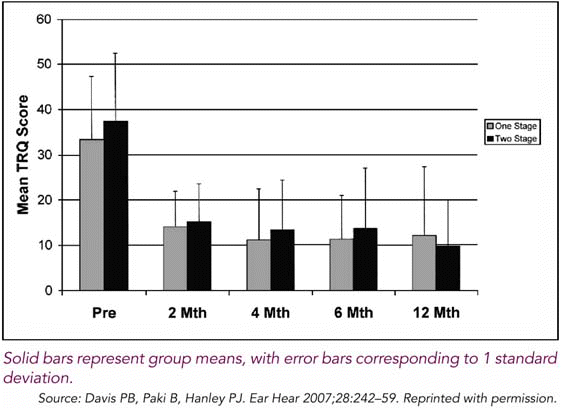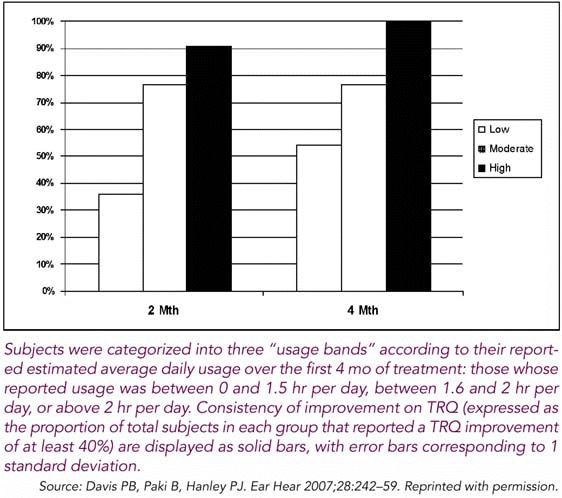In our study there was a quite a significant early benefit from the treatment, which happened in the first couple of months, said Dr. Hanley. Other treatment modalities that have been available for some time, which are heavily counseling-intensive, set the expectation of a year and a half to two years before the patient experiences significant benefit.
There were good rates of acceptability, convenience, and ease of use for the patients. More than 95 percent rated those questions positively in our treatment review survey, Dr. Hanley said. That has a major bearing on the relationship between the clinician and the patient. He added that this is also a time-efficient treatment that can be viably integrated into a physician’s practice (Figure 2).
Clinical outcomes were found to be related to the level of usage of the acoustic stimulus. One of the most striking results in the third trial was the dosage effect that we found, said Dr. Hanley. There was a strong relationship between the hours of usage per day-that is, the amount of the therapeutic agent that the patients receive-and the speed and consistency with which the benefits were reported.
Furthermore, in the version of the technology that is being employed since the time of the third trial, a dosage meter can now be used to record patients’ usage. We are seeing highly compliant usage, and that’s another big point of distinction compared with [other] treatment options, he said.
Neuromonics in Practice
Jack A. Shohet, MD, otologist-neurotologist in the solo practice of Shohet Ear Associates in Newport Beach, CA, has been using the treatment with a number of his patients for the last year. His patients have had a variety of responses but they are mostly favorable. There are some patients who feel an instant relief the minute they put the device on their ears, he said, but that’s certainly the exception rather than the rule. Others experience that their tinnitus awareness and disturbance are slowly improving. And some patients don’t realize the improvement until we point out how they were at the very beginning of the treatment plan.
Dr. Shohet appreciates the approach’s well-defined treatment protocol that gives the patient control. We have a limited armamentarium for the treatment for tinnitus, he said. Many of these patients are looking for something they can do, and for a lot of them, having the feeling that they are doing something for their disease process, in and of itself is a benefit.


Leave a Reply